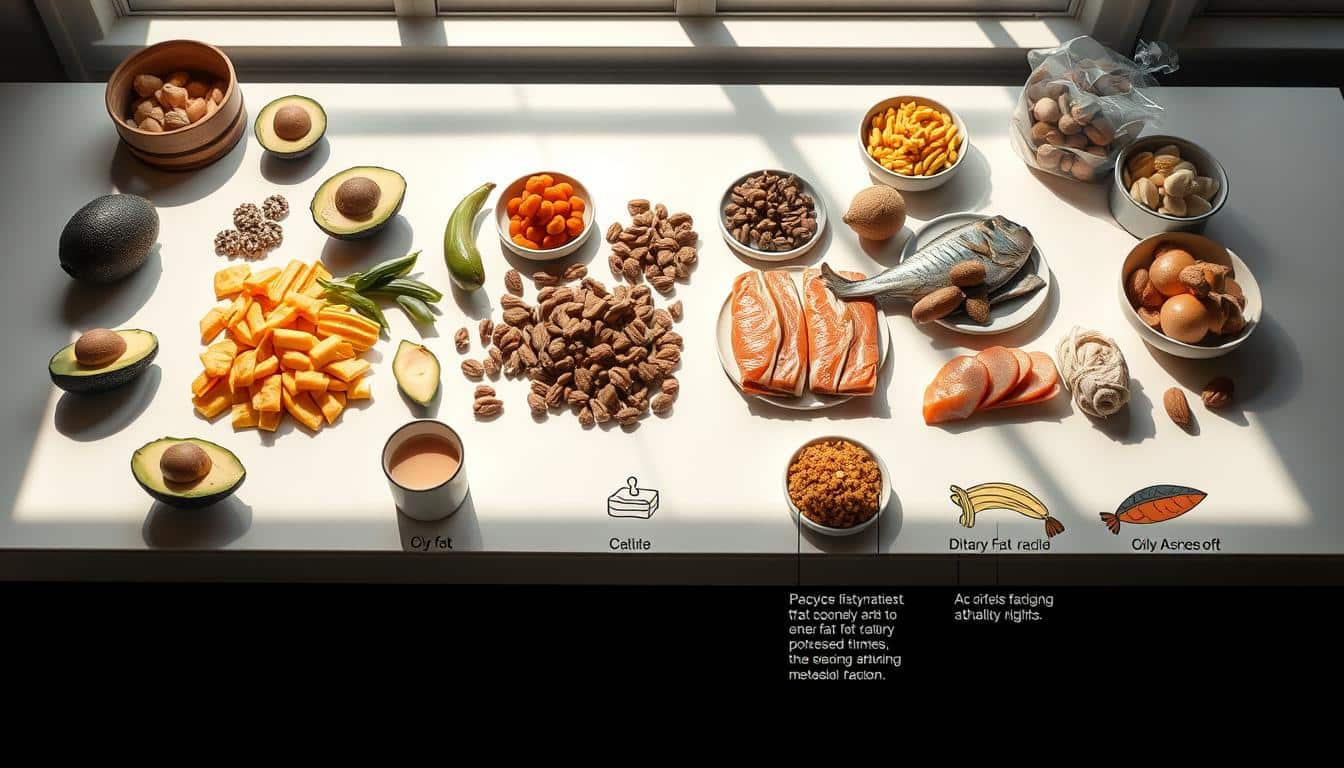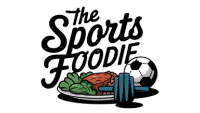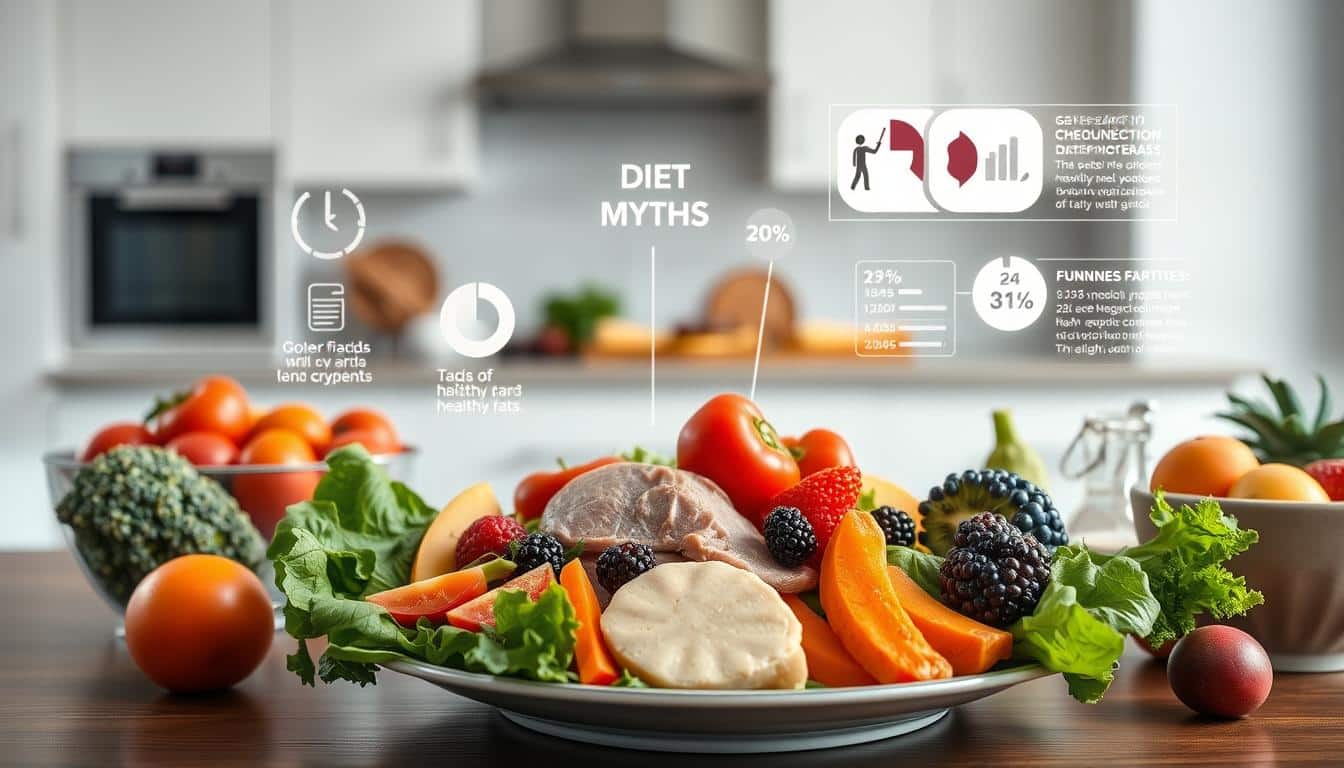Last summer, I watched a friend ditch avocado toast before our weekly bike rides. “Carbs only,” he insisted, convinced that fats would weigh him down. By mile 10, he’d always fade while others kept pace. His experience isn’t unique – many active people share this fear of dietary fats.
Let’s clear the air: not all food choices impact performance the way we assume. While some nutrition advice gets repeated like gospel, much of it lacks proper scientific backing. The belief that certain ingredients automatically hinder energy levels often stems from oversimplified thinking.
We’ve all encountered well-meaning tips about weight management and meal planning. But here’s what matters most: understanding how different nutrients actually fuel your body. Fats play crucial roles in hormone production and vitamin absorption – key factors for anyone maintaining an active lifestyle.
This article cuts through the noise. You’ll discover:
- Why outdated ideas about certain food groups persist
- How to distinguish between helpful and harmful nutrition claims
- Practical ways to balance your plate for sustained energy
By the end, you’ll have tools to make informed decisions about your health without falling for common misconceptions. Let’s build eating habits that work with your body, not against it.
Understanding the Eating Fat Makes You Slow Myth
I once met a yoga teacher who avoided olive oil like it was quicksand. “Liquid anchors,” she called it, convinced it would ruin her flexibility. Her story reflects a common fear many active individuals share about certain nutrients.

Definition and Popular Beliefs
This persistent idea claims fatty foods reduce speed and stamina. Some think it makes muscles work harder, like running in wet shoes. Others believe it clogs energy pathways, though science tells a different story.
Where did this start? Let’s break it down:
| Common Belief | Reality Check |
|---|---|
| “Fats sit heavy in your stomach” | Healthy fats digest at similar rates to complex carbs |
| “Fat turns into body fat immediately” | Nutrient storage depends on total calorie intake |
| “Energy comes only from carbs” | Fats provide sustained fuel for low-intensity activities |
Origins of the Myth
The 1980s low-fat craze planted many seeds of doubt. Food marketers capitalized on weight loss hopes, pushing “fat-free” as healthier. Fitness magazines echoed these claims without proper research.
Our bodies resist sudden changes – that’s why strict diets often backfire. When people cut fats completely, they sometimes feel weaker initially. This temporary slump got mistaken for proof rather than adjustment period.
Smart nutrition isn’t about elimination. It’s about understanding what truly fuels your unique needs. Next, we’ll explore how different nutrients actually work together.
Common Misconceptions About Diet and Performance
A marathon runner once told me she only ate plain rice before races. “No butter or nuts,” she said, fearing they’d sabotage her speed. Her story reveals how even seasoned athletes misunderstand fuel sources.
Fat, Carbohydrates, and Body Energy
Carbohydrates get split into two categories. Simple ones like soda and pastries spike blood sugar quickly. Complex versions in oats and lentils release energy gradually.

Your system uses both fats and carbs differently. Quick bursts of activity rely more on sugars. Endurance efforts tap into stored fats for lasting power.
Simplifying Nutrition Basics
Balanced meals prevent energy crashes. Pairing whole grains with avocado keeps you fueled longer than low-fat snacks. Restricting entire food groups often backfires.
Consider these facts:
- Nuts provide concentrated calories that support brain function
- Berries offer natural sugar with protective antioxidants
- Eggs deliver proteins that help maintain muscle mass
Smart weight management focuses on nutrient density, not elimination. Choosing quality foods matters more than obsessing over single ingredients.
Overview of Nutritional Science Basics
Last month, I stood in the grocery aisle comparing two yogurt labels. The low-fat version had twice the sugar of the whole milk option. This moment captures why understanding nutrients matters more than marketing claims.
Core Nutrients and Their Roles
Your system runs on three essential components. Carbohydrates act like premium gasoline for immediate energy needs. Proteins serve as construction crews repairing tissues. Fats function as specialized tools maintaining critical systems.
| Nutrient | Key Benefit | Top Sources |
|---|---|---|
| Fats | Absorb vitamins A/D/E/K | Avocados, nuts, olive oil |
| Proteins | Rebuild muscle fibers | Eggs, fish, lentils |
| Carbs | Fuel intense efforts | Oats, sweet potatoes, quinoa |
Many modified products backfire on weight goals. A “fat-free” cookie might contain 15% more sugar than the original. These swaps often add empty calories while removing beneficial nutrients.
Your brain relies on dietary fats for sharp thinking. Nearly 60% of its structure consists of fatty acids. Cutting these completely can fog mental clarity during workouts or workdays.
Smart choices recognize nutrient partnerships. Pairing spinach (iron) with lemon (vitamin C) boosts absorption. Understanding these interactions helps you build meals that truly sustain your active life.
Weight Loss, Health, and Nutritional Balance
A gym coach recently confessed he’d stopped recommending extreme diets. “Clients kept rebounding,” he said. His shift mirrors what science confirms: lasting results come from sustainable habits, not quick fixes.
Myth vs. Fact in Dieting
Many believe cutting carbs or fats guarantees success. Research tells a different story. Low-carb plans often show stronger initial results, but studies reveal similar long-term outcomes across diet types.
| Diet Approach | First 6 Months | 1+ Years |
|---|---|---|
| Low-Carb | Faster weight loss | Equal maintenance |
| Low-Fat | Steady progress | Comparable results |
Small changes create big impacts. Dropping just 10% of body weight slashes heart disease risks significantly. You don’t need drastic measures to see benefits.
Managing Calories and Nutrients
Successful plans focus on both quantity and quality. While calories matter, nutrient-rich foods keep you fuller longer. Consider these principles:
- Include proteins and healthy fats to stabilize energy
- Choose fiber-rich carbs for sustained fuel
- Allow occasional treats to prevent burnout
The best diet is one you’ll actually follow. Restrictive plans often fail because they ignore personal preferences. Build meals around foods you enjoy while hitting nutritional targets.
Foods That May Affect Your Metabolism
A colleague once swapped white rice for quinoa in every meal. Within weeks, she noticed steadier energy during afternoon workouts. Her experience highlights how specific foods influence metabolic processes more than we often realize.
Impact of Fats and Carbs on Energy Use
Your body treats different fuel sources uniquely. Whole grains like oats demand 20% more energy to break down than refined versions. This thermic effect explains why food quality matters as much as quantity for metabolic health.
| Food Type | Metabolic Impact | Practical Tip |
|---|---|---|
| Whole Grains | Burns 20% more calories during digestion | Choose brown rice over white |
| Lean Proteins | Boosts metabolism for 3-4 hours | Add chicken or tofu to meals |
| Healthy Fats | Supports hormone production | Use olive oil instead of butter |
Extreme calorie restriction backfires spectacularly. A Biggest Loser study found participants’ metabolisms stayed sluggish six years post-show. One man burned 800 fewer daily calories than expected for his size.
Regular meals maintain metabolic rhythm better than fasting. Skipping breakfast triggers conservation mode, reducing calorie burn by up to 10%. Pair proteins with complex carbs for optimal energy use throughout the day.
Debunking Diet Myths with Evidence
A doctor once shared her patient’s story during a nutrition conference. The man had tried six popular diets without lasting results until they focused on his sleep patterns and stress levels. This approach highlights why evidence-based strategies outperform rigid meal plans.
Insights from Health Experts
Medical groups now classify obesity as a chronic disease requiring long-term care. This shift changes how professionals approach weight management. Instead of blaming willpower, they address biological factors like hormones and genetics.
Exercise plays a smaller role in shedding pounds than many assume. Studies show physical activity accounts for just 3-5% of initial weight loss. Its real power emerges in maintenance phases, where regular movement prevents regain.
Learnings from Weight Management Studies
Research confirms no single diet works universally. A 2023 review of 45 studies found personalized plans outperformed standardized approaches by 63% in long-term adherence. Success depends on aligning food choices with individual lifestyles and preferences.
| Diet Approach | Success Rate (1 Year) | Key Factor |
|---|---|---|
| Low-Carb Customized | 58% | Tailored carb thresholds |
| Flexible Mediterranean | 61% | Emphasis on enjoyable foods |
| Portion-Focused | 54% | No banned items |
Lasting results come from sustainable habits, not quick fixes. Nutritionists increasingly recommend adding nutrient-rich foods rather than restricting choices. This positive framing helps people stick to changes without feeling deprived.
The Role of Fats in a Healthy Diet
Last week, I noticed a shopper staring at peanut butter jars like they held life-or-death decisions. Her dilemma captures our cultural confusion about fats. While some avoid them entirely, others embrace trendy options without understanding their roles.
Types of Dietary Fats
Not all fats behave the same in your system. Three main categories play distinct roles:
| Type | Best Sources | Key Benefits |
|---|---|---|
| Saturated | Coconut, dark chocolate | Energy reserves, hormone support |
| Monounsaturated | Olives, almonds | Heart health, vitamin absorption |
| Polyunsaturated | Salmon, flaxseeds | Brain function, inflammation control |
| Trans | Fried snacks, margarine | Avoid completely |
Fats and Their Importance for the Brain
Your brain’s structure relies heavily on fatty acids. Omega-3s from fish and walnuts help form neural connections. Studies show diets rich in these nutrients support memory and focus.
Balanced meals with whole grains and vegetables enhance fat benefits. Pairing spinach with olive oil boosts iron absorption. Even those carrying extra weight can maintain healthy blood pressure through smart food choices.
Regular activity complements these nutritional strategies. A 2022 Johns Hopkins study found adults prioritizing nutrient-dense foods improved blood sugar levels regardless of scale numbers. Your plate’s quality often matters more than calorie counts alone.
Incorporating Healthier Choices Into Your Daily Plan
I recently helped a neighbor revamp her snack drawer after she kept reaching for chips during evening workouts. Her journey shows how small tweaks create lasting change. Building better habits starts with smart preparation rather than perfect execution.
Practical Meal Planning Tips
Start by balancing your plate with purpose. Combine complex carbs like quinoa with grilled chicken and roasted veggies. This mix provides steady energy while helping manage portions.
Swap white bread for whole grain versions to boost fiber intake. Add berries or apple slices to satisfy sweet cravings naturally. These choices support weight goals without drastic restrictions.
| Meal Time | Smart Swap | Benefit |
|---|---|---|
| Breakfast | Oatmeal + almonds | Stabilizes morning hunger |
| Lunch | Grilled fish + brown rice | Sustains afternoon energy |
| Snacks | Greek yogurt + cucumber | Curbs evening cravings |
Simple Exercise Strategies
Pair nutrition changes with movement that fits your life. Alternate brisk walks with bodyweight exercises like squats or push-ups. This combo helps maintain muscle while burning body fat.
Aim for 150 weekly minutes of activity split across days. Track progress through how clothes fit rather than scale numbers alone. Remember – losing 1-2 pounds weekly adds up safely.
Keep pre-cut veggies handy for post-workout snacks. Staying prepared prevents grabbing sugary options when hunger strikes. Small, consistent steps create patterns that last.
Conclusion
A triathlete client once panicked when her nutritionist suggested adding almond butter to her training snacks. Six weeks later, she smashed her personal best – fueled by balanced meals rather than restriction. Her story mirrors what we’ve learned: lasting results come from understanding your body’s needs, not chasing food fears.
Smart nutrition isn’t about cutting entire food groups. It’s about pairing quality ingredients that work together. Whole grains keep energy steady, lean proteins support muscle repair, and yes – strategic fats help absorb essential nutrients. When you focus on nutrient timing and portion control, weight management becomes a natural side effect.
Start small. Swap one processed snack for a handful of nuts this week. Notice how your energy levels respond during workouts. Track progress through how your clothes fit rather than fixating on numbers. Remember – health gains often show up long before the scale moves.
Your journey deserves personalized strategies, not recycled myths. Keep experimenting until you find what makes you feel strong and energized. That’s when true transformation begins.


